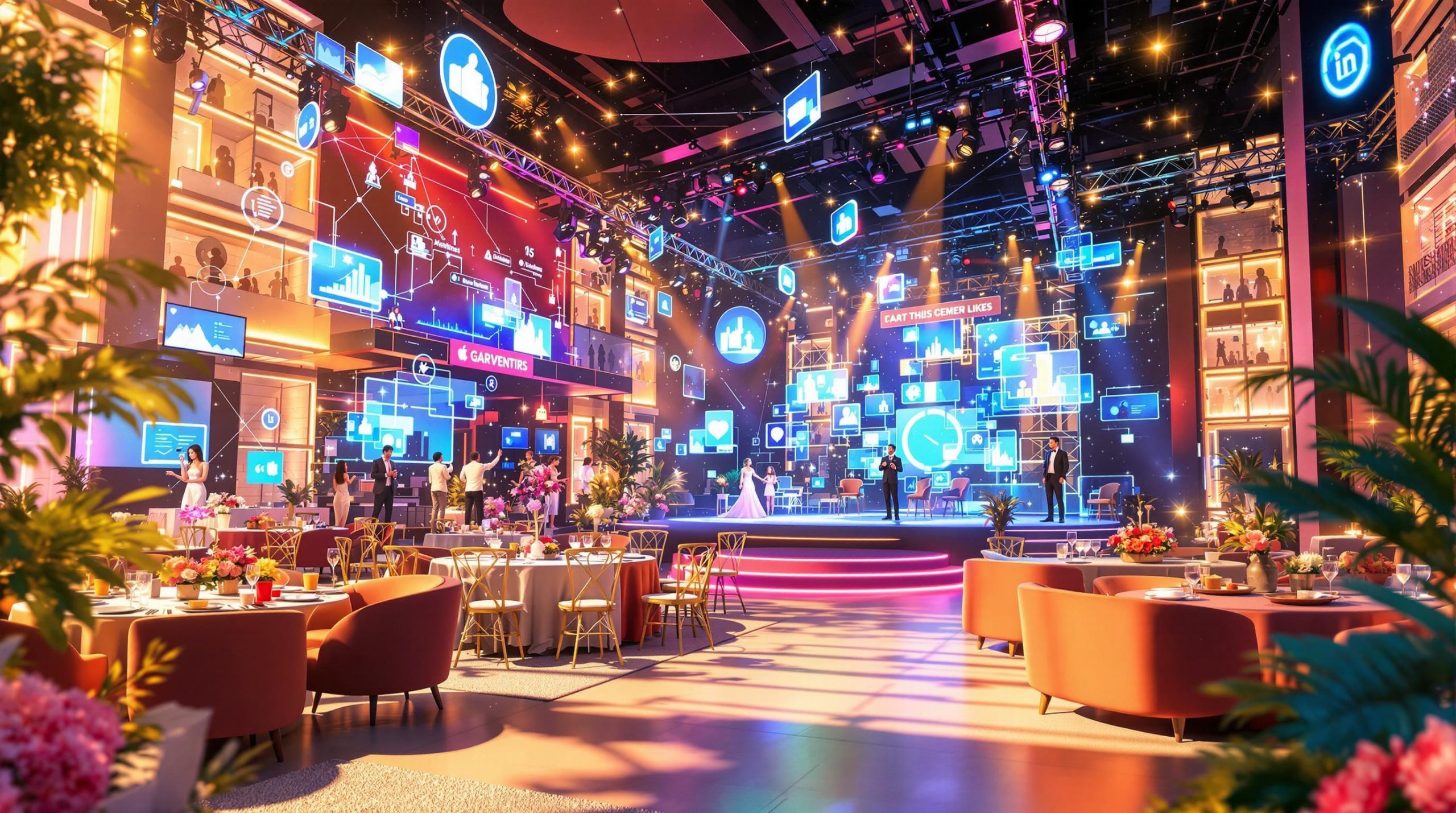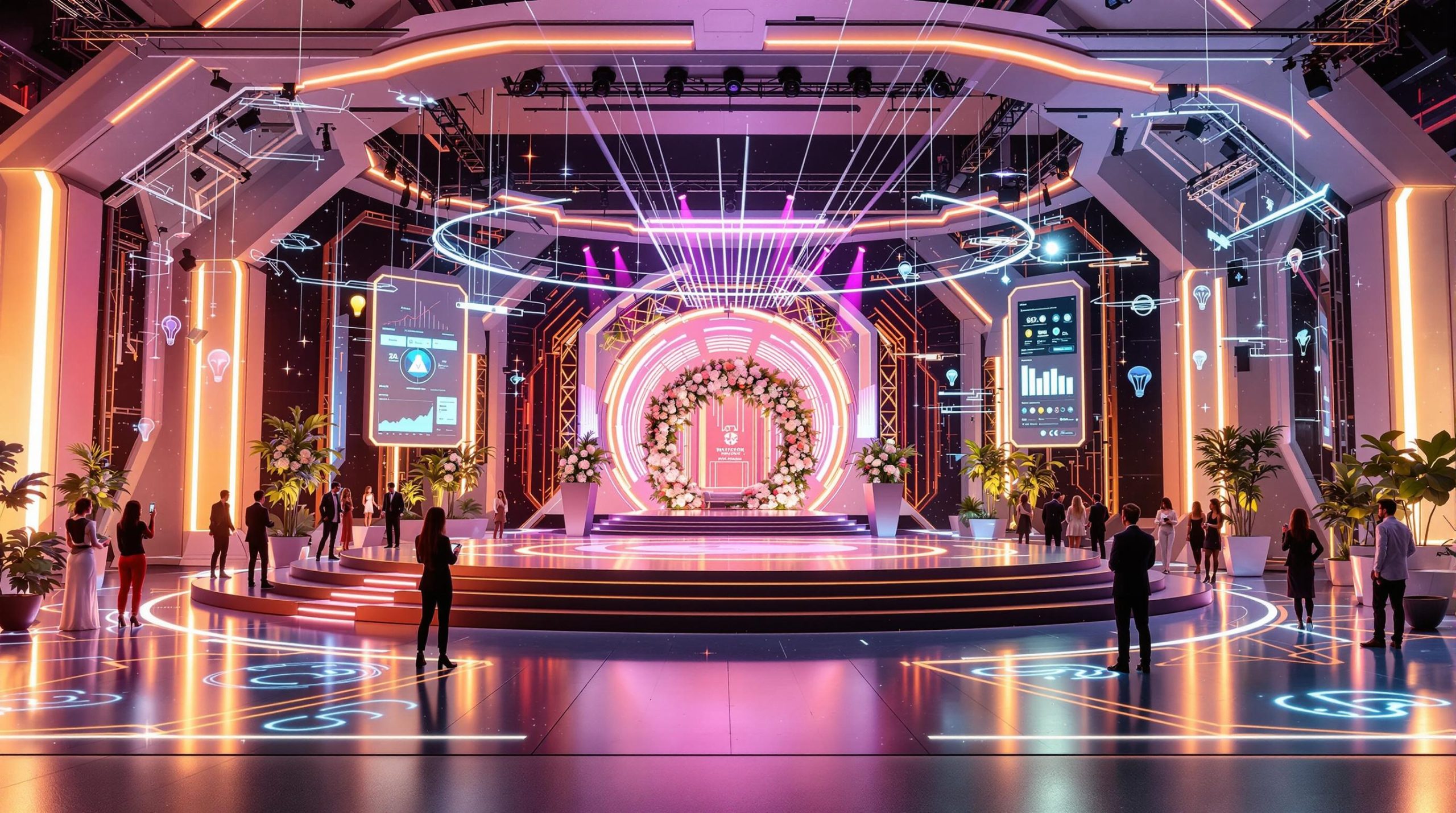The modern landscape of event planning, marketing, and experiential design relies on interconnected concepts that shape how brands and individuals create memorable experiences. This analysis explores space, custom, venue, immersive, wedding, talent, imagination, strategy, and engagement, comparing them to related technologies, services, and methodologies.
1. Space

Definition
Space refers to the physical or virtual environment where events, interactions, or experiences occur. It can be a physical location (e.g., a conference hall) or a digital platform (e.g., a metaverse).
Comparison
- Related Concept: Virtual Reality (VR)
- Similarities: Both redefine spatial boundaries. VR replicates physical spaces digitally.
- Differences: Physical spaces offer tangible interactions; VR prioritizes accessibility and scalability.
Strengths & Weaknesses
| Strengths | Weaknesses |
|---|---|
| Flexibility in design | High costs for customization |
| Adaptable to audience size | Limited by physical constraints |
Applicable Scenarios
- Best For: Hybrid events, pop-up activations, or digital product launches.
2. Custom
Definition
Custom involves tailoring experiences, products, or services to meet specific client needs.
Comparison
- Related Service: Bespoke Software Development
- Similarities: Both prioritize personalization.
- Differences: Custom events focus on experiential outcomes; software targets functional needs.
Strengths & Weaknesses
| Strengths | Weaknesses |
|---|---|
| Enhances client satisfaction | Time-intensive |
| Builds brand loyalty | Higher costs |
Applicable Scenarios
- Best For: Luxury weddings, corporate retreats, or niche marketing campaigns.
3. Venue
Definition
A venue is a dedicated location for hosting events, ranging from banquet halls to outdoor parks.
Comparison
- Related Technology: Event Management Platforms
- Similarities: Both facilitate event logistics.
- Differences: Venues are physical; platforms optimize virtual coordination.
Strengths & Weaknesses
| Strengths | Weaknesses |
|---|---|
| Provides a controlled environment | Limited availability |
| Enhances ambiance | Geographic constraints |
Applicable Scenarios
- Best For: Weddings, conferences, or galas requiring a curated atmosphere.
4. Immersive
Definition
Immersive experiences use technology (e.g., AR/VR) or sensory design to deeply engage participants.
Comparison
- Related Technology: Augmented Reality (AR)
- Similarities: Both prioritize engagement through multi-sensory stimuli.
- Differences: Immersive design can be non-digital (e.g., themed environments).
Strengths & Weaknesses
| Strengths | Weaknesses |
|---|---|
| Creates emotional connections | Requires technical expertise |
| Memorable and shareable | High initial investment |
Applicable Scenarios
- Best For: Product launches, art installations, or interactive brand activations.
5. Wedding
Definition
A wedding is a ceremonial event celebrating marriage, often requiring intricate planning and coordination.
Comparison
- Related Service: Event Planning
- Similarities: Both involve logistics and vendor management.
- Differences: Weddings emphasize cultural/emotional significance; generic events focus on objectives.
Strengths & Weaknesses
| Strengths | Weaknesses |
|---|---|
| High emotional ROI | Stressful due to high stakes |
| Opportunities for creativity | Budget overruns common |
Applicable Scenarios
- Best For: Couples seeking personalized celebrations or brands targeting bridal markets.
6. Talent
Definition
Talent refers to skilled individuals (e.g., performers, speakers) who enhance events through their expertise.
Comparison
- Related Concept: AI-Powered Avatars
- Similarities: Both entertain or inform audiences.
- Differences: Talent offers human connection; avatars provide consistency and scalability.
Strengths & Weaknesses
| Strengths | Weaknesses |
|---|---|
| Unique, dynamic performances | Scheduling conflicts |
| Builds audience rapport | Higher costs for top-tier talent |
Applicable Scenarios
- Best For: Live concerts, keynote speeches, or influencer-driven marketing.
7. Imagination
Definition
Imagination drives creative ideation, enabling the design of unique experiences that defy convention.
Comparison
- Related Methodology: Design Thinking
- Similarities: Both prioritize innovation and user-centric solutions.
- Differences: Imagination is abstract; design thinking follows structured phases.
Strengths & Weaknesses
| Strengths | Weaknesses |
|---|---|
| Unlimited creative potential | Risk of impractical ideas |
| Differentiates brands | Requires alignment with strategy |
Applicable Scenarios
- Best For: Concept development, rebranding campaigns, or experimental art projects.
8. Strategy
Definition
Strategy involves planning actionable steps to achieve specific goals, such as maximizing event ROI.
Comparison
- Related Tool: Data Analytics
- Similarities: Both inform decision-making.
- Differences: Strategy is forward-looking; analytics assess past performance.
Strengths & Weaknesses
| Strengths | Weaknesses |
|---|---|
| Aligns resources with objectives | Over-reliance can stifle creativity |
| Mitigates risks | Requires continuous adaptation |
Applicable Scenarios
- Best For: Long-term brand campaigns, crisis management, or budget allocation.
9. Engagement
Definition
Engagement measures how actively audiences interact with content, brands, or experiences.
Comparison
- Related Metric: Social Media Algorithms
- Similarities: Both prioritize audience interaction.
- Differences: Engagement is qualitative; algorithms quantify interactions.
Strengths & Weaknesses
| Strengths | Weaknesses |
|---|---|
| Builds community loyalty | Difficult to sustain long-term |
| Enhances brand visibility | Vulnerable to platform changes |
Applicable Scenarios
- Best For: Social media campaigns, live Q&A sessions, or interactive workshops.
Case Studies & Statistics
- Immersive Wedding Success: A 2023 study found that couples using AR for venue previews reduced planning stress by 40%.
- Custom vs. Generic: Brands offering custom experiences saw a 28% higher retention rate (Forrester, 2022).
- Talent ROI: Events featuring live performers reported 2x higher attendee satisfaction (EventMB).
FAQs
Q: How do I choose between a physical venue and a virtual space?
A: Consider audience size, budget, and interaction goals. Hybrid models often balance both.
Q: Can AI replace human talent in events?
A: AI excels in consistency, but human talent fosters emotional connections.
Q: What metrics define successful engagement?
A: Look beyond likes—track time spent, participation rates, and post-event feedback.
Actionable Tips
- Use strategy to align imagination with measurable goals.
- Combine immersive tech with custom storytelling for unforgettable weddings.
- Leverage data analytics to refine engagement tactics in real time.
By mastering these concepts, brands and planners can craft experiences that resonate deeply, drive action, and leave lasting impressions.
